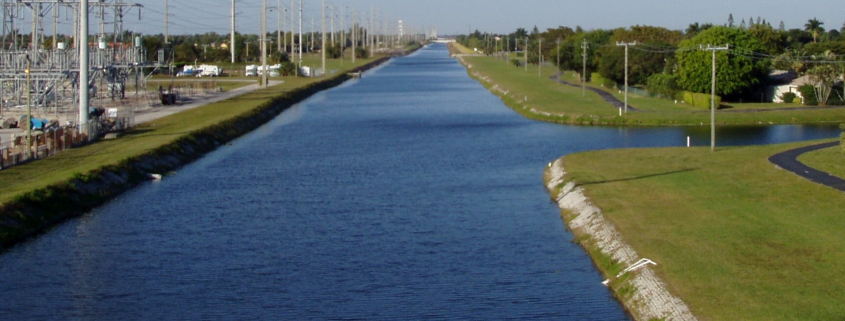WHAT IS A “WELL-MAINTAINED” CANAL?
The LWDD canals are crucial in flood control and water supply. With over 500 miles of drainage canals, the LWDD manages stormwater to support residents, businesses, and agriculture. Effective flood control hinges on the maintenance of these canals and their rights-of-way. But what does “well-maintained” actually mean? A canal or right-of-way that some property owners might view as unsightly is often considered well-maintained for flood control purposes by the LWDD.
Firstly, canals are not maintained for aesthetic reasons. They are not designed to be pristine waterways for recreational use; instead, they are maintained primarily for effective flood control. Key aspects of this maintenance include ensuring the free flow of water to divert excess stormwater from properties and keeping canal rights-of-way clear for regular maintenance and emergency access. This is achieved by removing aquatic vegetation and the mowing of canal banks.
The LWDD’s canal system hosts various species of aquatic plants. Some plants can slow water flow within the canal channels or large flood control structures. To manage this, the LWDD uses herbicides and mechanical removal methods. While algae in canals may not be visually appealing to some property owners, it does not pose a threat to flood control. Algae are small and can easily pass through drainage pipes and control structures. Moreover, the herbicides used to treat algae are chosen to minimize harm to the water body.
Canal rights-of-way and banks are maintained on different schedules. The low-maintenance team uses specialized equipment for smaller areas twice a year, while the high-maintenance crew mows the top of the banks approximately four times a year. The side slopes are maintained by arm-mowers about three times a year. Tall grass does not impede access to canals or control structures or disrupt flood control operations. Grasses and vegetation can grow several inches before the next scheduled mowing, and because these areas are not fertilized or irrigated, a quarterly mowing schedule supports natural seeding and regrowth.
Some property owners adjacent to the right-of-way may choose to enhance the appearance of their grass by irrigating and mowing more frequently. However, this additional maintenance is at their own expense, and no encroachments like trees or shrubs are permitted.
Effective flood control involves costs shared by all property owners within the Lake Worth Drainage District boundary, regardless of proximity to a canal. The non-ad valorem assessment rate for 2025 is $48.50 for parcels equal to or less than one acre, as determined by the Board of Supervisors. By ensuring well-maintained canal rights-of-way, the Lake Worth Drainage District fulfills its mission of effective flood control at an equitable cost for all residents.




